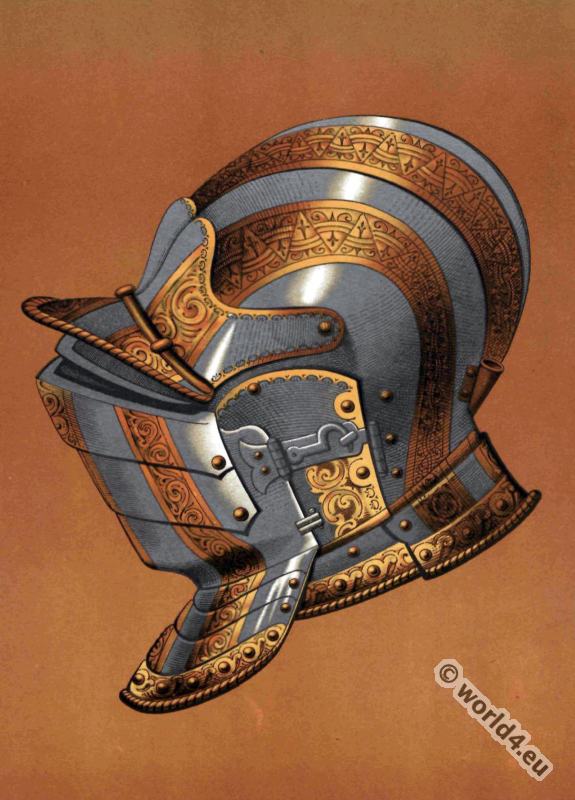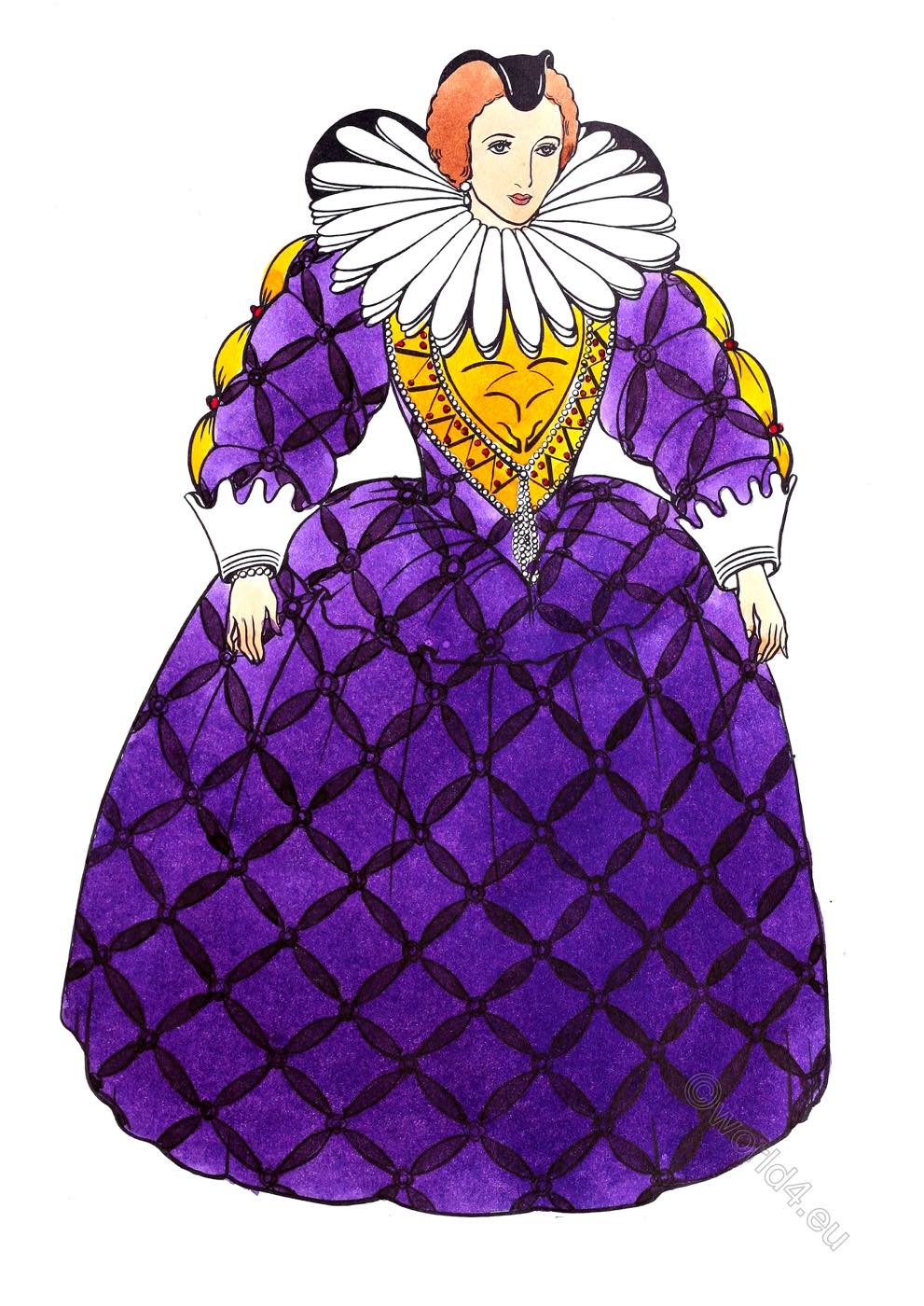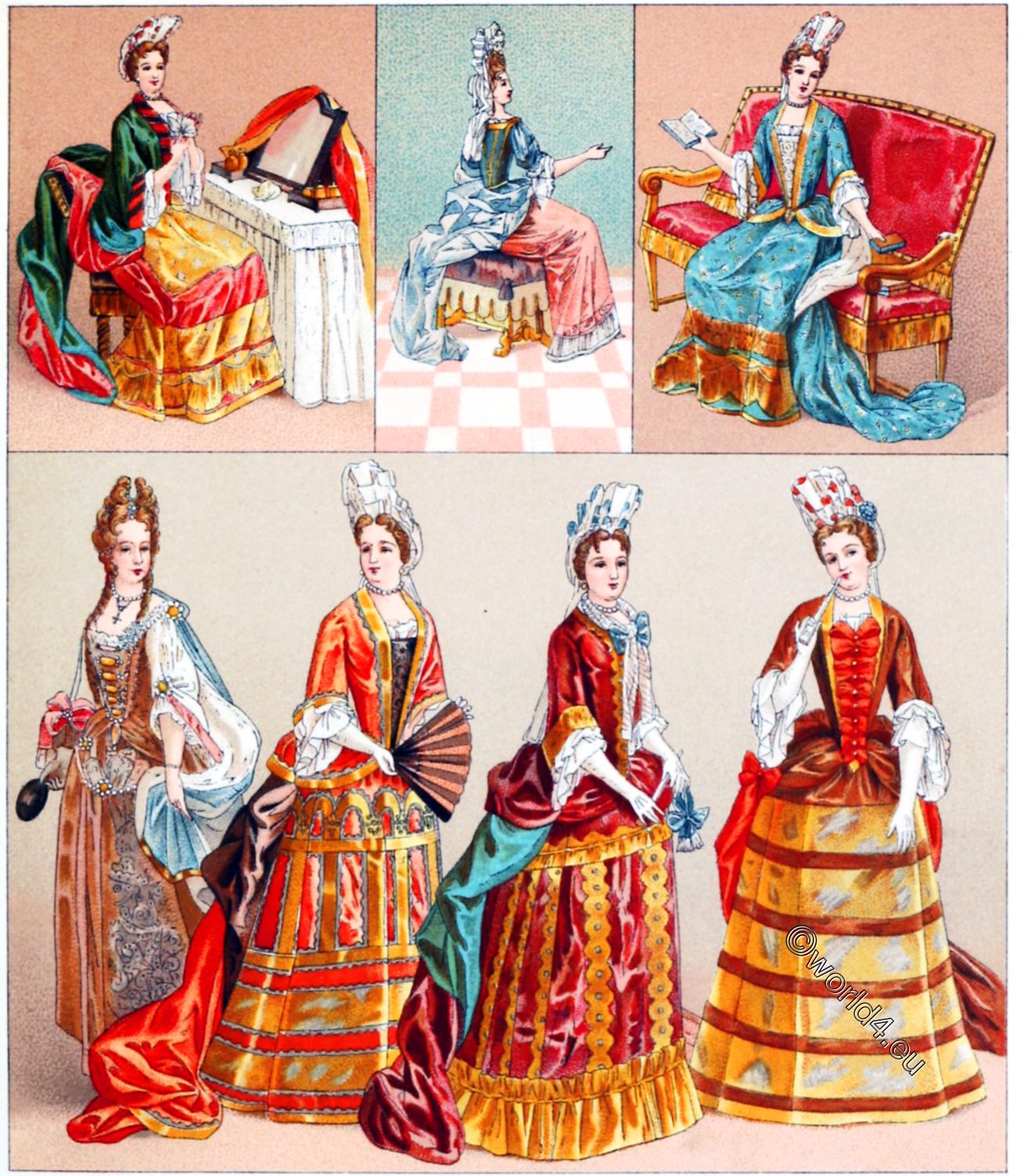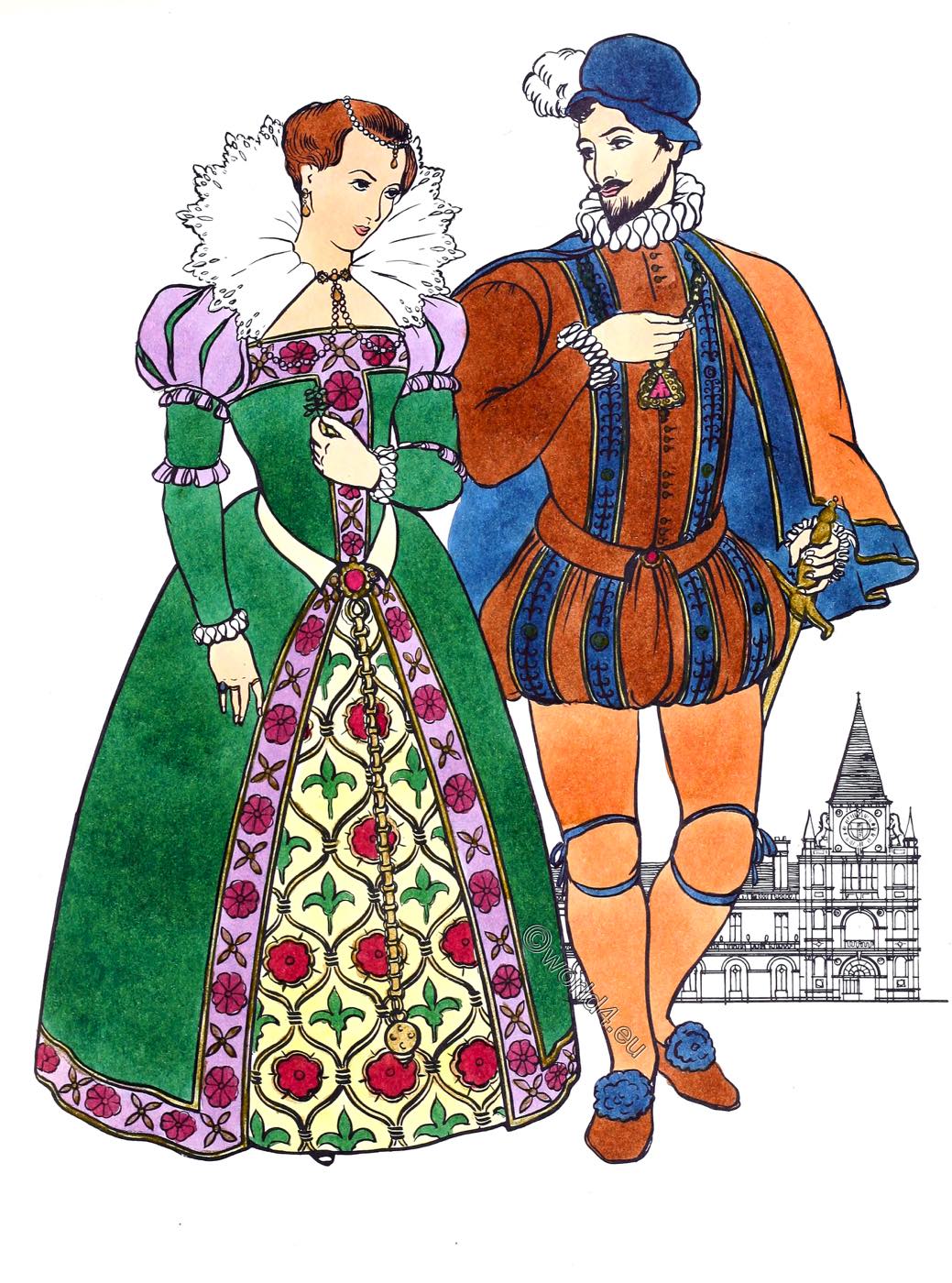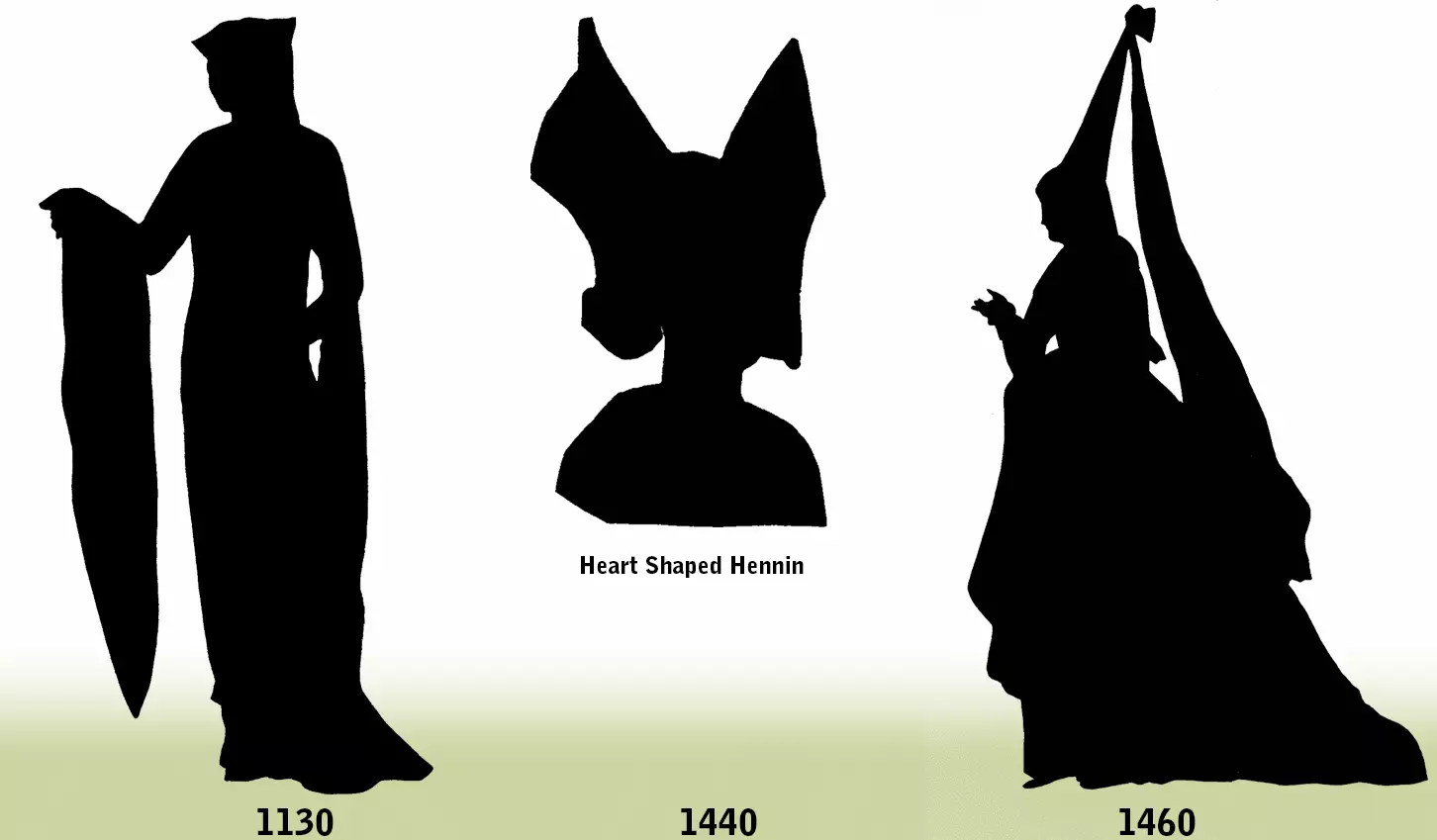
Transitional Female costume between the Elizabethan and Charles I modes.
ELIZABETHAN – PLATE NO. 43
Elizabethan fashion 1550 to 1620.
The man and woman shown here exhibit a certain ease and laxity in their costume that may seem somewhat out of keeping with the Elizabethan ideal. The reason for this is that the woman’s outfit is very late in the period, being really a transitional ensemble between the Elizabethan and Charles I modes. The man wears loose unpadded garments which likewise seem to look forward to the ensuing era.
The man is wearing a rather full, pointed beard and a smooth beaver hat which was very popular at that time. The band and plume are ever present. He is wearing a fashionable, by no means rare, triple ruff, made exactly like the single one, only in triplicate, and worn in the same manner — high up under the ears. His doublet (from what we can see of the sleeves and lower front part) seems to fit rather casually and loosely.
Over his doublet he wears a leather belt into which he has tucked his gauntlets — cuffed gloves — and from which hangs his sword. Over all this he has put on a sleeveless jerkin. It buttons all the way down the front, fits loosely, and seems rather long, even for a jerkin. His upper stocks are a form of Swiss hose — full, baggy, and in this case very meagerly paned, revealing a great expanse of the under-material. He is wearing cross-garters like the man in Plate 40 and his shoes, with the exception of being entirely heelless, are like these in Plate 39.
The woman’s ensemble shows a general loosening and, as can be seen, a tendency toward the soft grace of the Charles I costume. Her hair is already being worn lower. The lace collar, though still worn high on the neck, is no longer starched, and falls onto her shoulders. Her embroidered bodice with its small tabs is still essentially Elizabethan; but her skirt, with its inverted V opening, is not worn over a farthingale as was formerly the case. It still stands out in a circle about her feet, due to the stiff material of which it was made and also because of the numerous petticoats worn under it.
Over her bodice she wears a sleeved outer jacket that flares slightly from the waist and has the characteristic Elizabethan trimming of “wings” at the shoulders. It is trimmed with embroidery and braid, and over it she has put on her elaborate heavy gold chain.
Source: Museum Extension Project. History of Costume.
Related
Discover more from World4 Costume Culture History
Subscribe to get the latest posts sent to your email.

